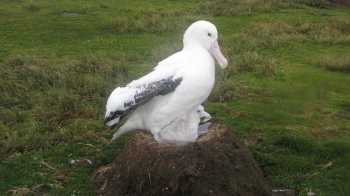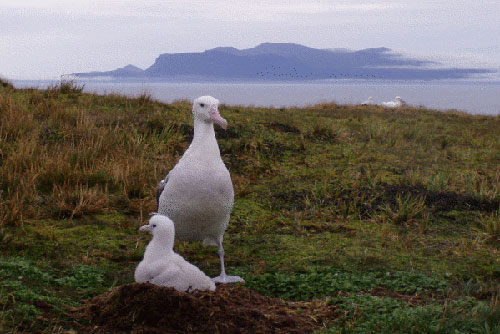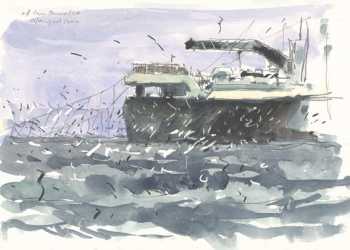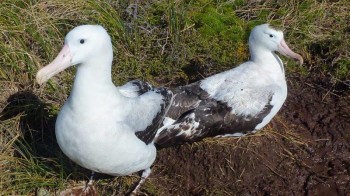Michelle Reynolds (Pacific Island Ecosystems Research Center, U.S. Geological Survey, Hawaii, U.S.A.) and colleagues have published in the open-access online journal PloS ONE on the risk sea-level rise imposes on seabirds on the low-lying atolls in the Northwestern Hawaiian Islands.
The paper’s abstract follows:
More than 18 million seabirds nest on 58 Pacific islands protected within vast U.S. Marine National Monuments (1.9 million km2). However, most of these seabird colonies are on low-elevation islands and sea-level rise (SLR) and accompanying high-water perturbations are predicted to escalate with climate change. To understand how SLR may impact protected islands and insular biodiversity, we modeled inundation and wave-driven flooding of a globally important seabird rookery in the subtropical Pacific. We acquired new high-resolution Digital Elevation Models (DEMs) and used the Delft3D wave model and ArcGIS to model wave heights and inundation for a range of SLR scenarios (+0.5, +1.0, +1.5, and +2.0 m) at Midway Atoll. Next, we classified vegetation to delineate habitat exposure to inundation and identified how breeding phenology, colony synchrony, and life history traits affect species-specific sensitivity. We identified 3 of 13 species as highly vulnerable to SLR in the Hawaiian Islands and quantified their atoll-wide distribution (Laysan albatross, Phoebastria immutabilis; black-footed albatross, P. nigripes; and Bonin petrel, Pterodroma hypoleuca). Our models of wave-driven flooding forecast nest losses up to 10% greater than passive inundation models at +1.0 m SLR. At projections of + 2.0 m SLR, approximately 60% of albatross and 44% of Bonin petrel nests were overwashed displacing more than 616,400 breeding albatrosses and petrels. Habitat loss due to passive SLR may decrease the carrying capacity of some islands to support seabird colonies, while sudden high-water events directly reduce survival and reproduction. This is the first study to simulate wave-driven flooding and the combined impacts of SLR, groundwater rise, and storm waves on seabird colonies. Our results highlight the need for early climate change planning and restoration of higher elevation seabird refugia to prevent low-lying protected islands from becoming ecological traps in the face of rising sea levels.”
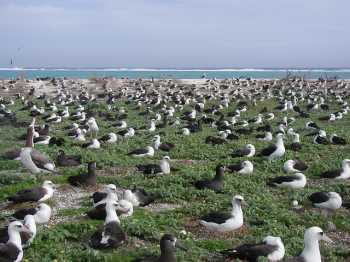
Low-lying colony of Black-footed and Laysan Albatrosses
Click here for a press release on the publication and here for an earlier item on sea level rise and albatrosses in ACAP Latest News.
Reference:
Michelle H. Reynolds, M.H., Courtot, K.N., Berkowitz, P., Storlazzi, C.D., Moore, J. & Flint, E. 2015. Will the effects of sea-level rise create ecological traps for Pacific island seabirds? PloS ONE DOI: 10.1371/journal.pone.0136773.
John Cooper, ACAP Information Officer, 27 September 2015

 English
English  Français
Français  Español
Español 